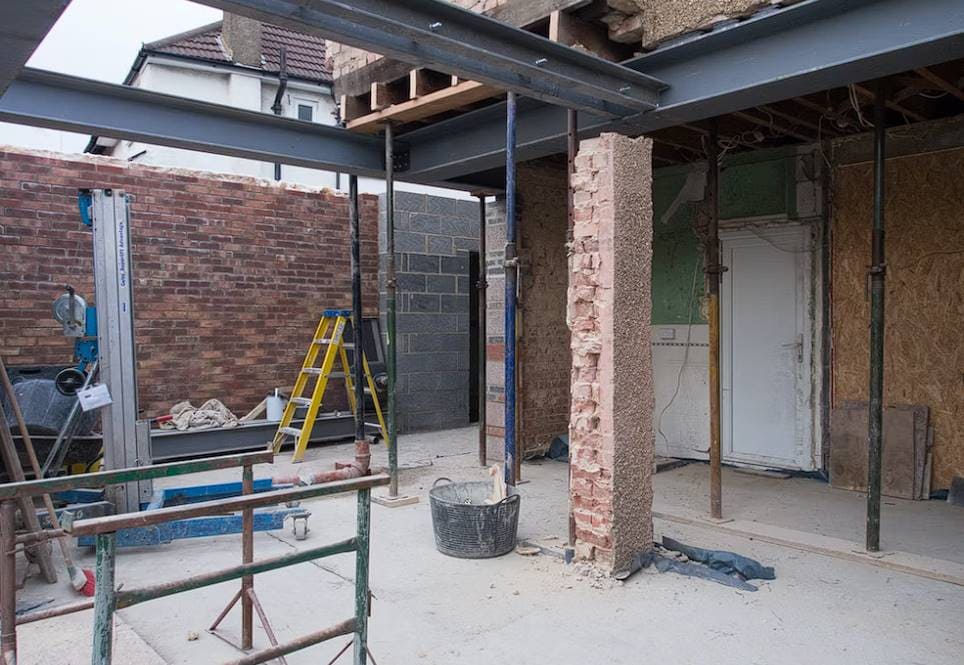Selecting the right cement for plastering is vital for construction or renovation projects. Using the appropriate cement ensures that ceilings and walls are durable and have a smooth, attractive finish.
This guide outlines the qualities of high-quality plastering cement and compares various cement types to help you make an informed decision.
Let’s get straight to the point.
Portland Pozzolana Cement (PPC) is the best choice for plastering due to its strength, durability, crack resistance, workability, and affordability.
High-quality plastering cement should have a balanced setting time, good adhesion, low shrinkage, and compatibility with additives.
Various cement types, such as OPC, PPC, white cement, rapid hardening, and others, suit specific plastering needs.
Proper surface preparation, mixing, and curing are key to achieving a smooth, long-lasting finish.
PPC’s balanced properties make it ideal for both residential and commercial
Best Cement Choice For Plastering

Based on a thorough analysis, Portland Pozzolana Cement (PPC) is the top choice for plastering due to its balanced properties. Here’s why PPC stands out:
1. Strength And Durability
- PPC offers excellent compressive strength, ensuring a robust, long-lasting plaster finish that withstands external elements like moisture and temperature changes.
- Its durability makes it ideal for both interior and exterior applications. It provides a plaster layer that resists wear and tear over time.
2. Workability
- This cement type is easy to mix and apply, enhancing productivity during plastering jobs.
- Its smooth texture enables a consistent, uniform finish, reducing the need for extensive finishing work.
3. Crack Resistance
- Pozzolanic materials in PPC improve their ability to resist cracking, reducing the need for frequent repairs and maintenance.
- It effectively handles minor structural shifts, preventing the development of surface imperfections.
4. Affordability
- PPC offers a high-quality solution at a competitive price, making it a cost-effective choice for large and small-scale projects.
- Its efficient performance lowers overall construction costs by minimising material waste.
5. Compatibility With Additives
- PPC blends seamlessly with additives like fly ash, lime, and gypsum, allowing for tailored plastering mixes suited to specific project needs.
- This adaptability makes it versatile for different climates and building conditions, enhancing its utility in diverse scenarios.
Portland Pozzolana Cement (PPC) is highly recommended for its strength, ease of use, crack resistance, affordability, and versatility, making it a reliable choice for plastering applications.
Qualities Of High-Quality Plastering Cement
High-quality plastering cement should have specific properties to create a smooth, long-lasting surface. The essential qualities to look for include:
- Setting Time: Plastering cement should have a balanced setting time. It must be workable enough for application but not so slow that it delays construction.
- Workability: Cement must be easy to mix, apply, and smooth over surfaces. Workable cement allows for a consistent, level finish with minimal effort.
- Adhesion Strength: The bond strength of cement is crucial. Strong adhesion helps the plaster stick firmly to walls or ceilings, reducing the risk of cracks or separation over time.
- Durability: Cement should withstand environmental conditions like rain, heat, and humidity without deteriorating. This ensures the plaster remains intact and appealing for many years.
- Crack Resistance: The ability to resist cracking is vital for maintaining the appearance and integrity of the plastered surface. It helps prevent damage due to structural movements or temperature changes.
- Consistency and Homogeneity: The mixture must have consistent quality, avoiding uneven surfaces or patchy areas in the final finish.
- Compatibility with Additives: The cement should mix well with additives like lime, gypsum, or polymers, allowing for enhanced flexibility and improved plaster properties.
- Low Shrinkage: Low shrinkage reduces the risk of cracks developing during curing, leading to a more durable plaster layer.
- Open Time: The open time determines how long the cement remains workable after mixing. Longer open times allow for easier and more precise application.
- Cost-Effectiveness: Cement should balance quality and affordability to ensure it fits within the project budget without compromising performance.
Types Of Cement For Plastering
Several types of cement are commonly used for plastering. Each type has unique properties that make it suitable for different applications:
1. Ordinary Portland Cement (OPC)
- Benefits: OPC is widely used for its excellent adhesion and strength. It provides a
reliable finish for both indoor and outdoor plastering.
- Drawbacks: OPC can sometimes be set too quickly for larger projects.
2. Portland Pozzolana Cement (PPC)
- Benefits: PPC contains pozzolanic materials like fly ash, which improve workability and crack resistance. It is ideal for high-moisture areas.
- Drawbacks: PPC can have a slightly slower setting time than OPC.
3. White Cement
- Benefits: White cement is used for decorative plastering, providing a smooth, bright finish. It is ideal for interiors and areas requiring a clean appearance.
- Drawbacks: It is more expensive than other types of cement.
4. Rapid Hardening Cement
- Benefits: This type of cement sets and gains strength quickly, which is useful for projects needing a fast turnaround.
- Drawbacks: It requires precise handling, as it can harden too quickly if not applied properly.
5. Fibre Cement
- Benefits: Fibre cement incorporates fibrous materials, enhancing crack resistance and impact strength. It is suitable for surfaces that may experience movement or stress.
- Drawbacks: It can be more challenging to work with due to its dense composition.
6. Coloured Cement
- Benefits: Coloured cement is used for decorative effects in plastering. It comes in various shades, allowing for creative designs and patterns.
- Drawbacks: Colour consistency can vary, requiring careful mixing.
7. Hydraulic Cement
- Benefits: Sets and hardens quickly through a chemical reaction with water, providing strong water-resistant properties.
- Drawbacks: It is best suited for damp areas; it may offer a different finish than other types of cement.
8. Waterproof Cement
- Benefits: Specifically designed to resist water, making it perfect for bathrooms, kitchens, and outdoor walls.
- Drawbacks: It can be more expensive and less workable than other cement.
9. Air-Entraining Cement
- Benefits: Ideal for cold climates, as it contains air bubbles that improve resistance to freeze-thaw cycles.
- Drawbacks: Not commonly used in warmer regions due to its specific properties.
Effective Use Of Plastering Cement

To achieve the best results when using plastering cement, follow these key steps:
- Surface Preparation: Ensure the surface is clean and free of dust or grease to promote better adhesion.
- Mixing Ratio: Use the right proportion of water and cement to achieve a lump-free, smooth consistency.
- Primer Application: Applying a primer helps the cement bond better with the surface, reducing the risk of delamination.
- Application Technique: Use the correct technique, such as applying the plaster in layers or using a hawk and trowel for an even finish.
- Curing: Allow the plaster to cure properly to prevent cracking and to strengthen the cement bond.
- Tool Usage: Professional tools like trowels and floats are essential for a precise and polished look.
Tips For Avoiding Common Issues
- Avoid Overworking: Do not over-manipulate the cement once it starts to set, as this can weaken the finish.
- Monitor Weather Conditions: High temperatures can cause the plaster to dry too quickly, leading to cracks.
- Fix Imperfections Promptly: Repair any minor cracks or uneven areas before the plaster fully cures to ensure a smooth surface.
Conclusion
Choosing the best plaster cement is crucial for achieving a durable and aesthetically pleasing finish.
Portland Pozzolana Cement (PPC) is a strong, workable, crack-resistant, and affordable option for residential and commercial plastering projects.
By understanding the properties of different types of cement and following the recommended application techniques, you can ensure a flawless and long-lasting plastering result for your project.
Proper planning, surface preparation, and curing are essential steps to creating smooth, even surfaces that enhance the visual appeal and durability of any building.
Frequently Asked Questions
Is it necessary to use a primer before plastering?
Yes, applying a primer before plastering helps improve adhesion and ensures a smooth finish.
How long should I wait before painting the plastered surface?
It is advisable to wait at least 28 days for the plaster to cure completely before painting.
Can I use regular cement for plastering exterior walls?
Regular cement can be used for exterior plastering, but for better durability, consider weather-resistant cement.
What is the difference between gypsum plaster and cement plaster?
Gypsum plaster is a lightweight material suitable for interior plastering, while cement plaster is more durable and used for interior and exterior applications.
Can plastering cement be used for repairing cracks in walls?
Yes, plastering cement can repair small cracks in walls, providing a strong and seamless finish.

